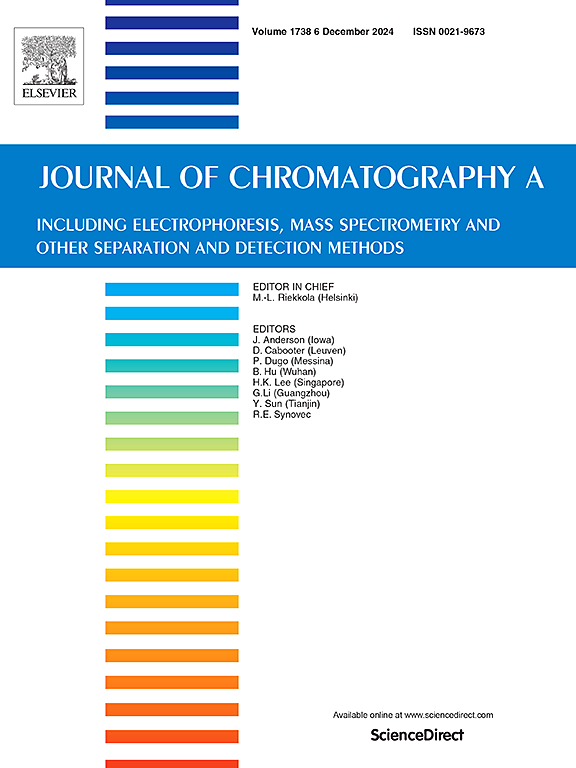Use of a centrifuge in solid-phase extraction is a valid platform for cleanup in the high-throughput analysis of chemical contaminants in nonfatty and fatty foods
IF 3.8
2区 化学
Q1 BIOCHEMICAL RESEARCH METHODS
引用次数: 0
Abstract
In recent years, the “quick, easy, cheap, effective, rugged, safe, efficient, and robust” (QuEChERSER) mega-method was developed for sample preparation and analysis of pesticides, environmental contaminants, veterinary drugs, and other residues in a wide variety of foods. In addition to wider analytical scope, QuEChERSER has many other advantages over the previous QuEChERS method, such as better cleanup for improved quality of results. For example, automated robotic mini-cartridge solid-phase extraction (µ-SPE) has been shown to provide excellent cleanup prior to gas chromatography - tandem mass spectrometry (GC-MS/MS) analysis. However, not all laboratories have the resources and expertise needed to adopt the robotic method. To address this limitation, a new approach is herein introduced using centrifugal µ-SPE as a simpler and lower-cost alternative using the same commercial mini-cartridges as the robotic version. In this study, both robotic and centrifugal µ-SPE were compared for the cleanup of QuEChERS and QuEChERSER extracts of 10 commodities (avocado, blueberry, egg, mixed grains, honey, bovine kidney/liver, whole milk, black olive, spinach, and tilapia) in the low-pressure GC-MS/MS analysis of 245 pesticides and environmental contaminants. QuEChERS extracts overwhelmed the sorbents in the mini-cartridges in most cases, leading to less cleanup and worse performance in the most complex matrices, but the 4-fold more dilute QuEChERSER extracts avoided that problem while still meeting detection limit needs. This study demonstrated that graphitized carbon black (GCB) was not needed for cleanup of samples that did not contain chlorophyll, and inclusion of more than 1 mg of GCB in the mini-cartridges led to <3 % recovery of certain structurally planar analytes. In QuEChERSER, analyte recoveries averaged 99 % in all matrices using both robotic and centrifugal µ-SPE, but robotic liquid handling demonstrated better precision of 4 % RSD compared to 6 % using the centrifugal option. Cleanup was also slightly better using robotic automation. Laboratories may choose either option in QuEChERSER (or QuEChERS) to achieve better cleanup, analytical performance, and greater ruggedness than the dispersive-SPE format commonly employed in this application for the past 20 years.
求助全文
约1分钟内获得全文
求助全文
来源期刊

Journal of Chromatography A
化学-分析化学
CiteScore
7.90
自引率
14.60%
发文量
742
审稿时长
45 days
期刊介绍:
The Journal of Chromatography A provides a forum for the publication of original research and critical reviews on all aspects of fundamental and applied separation science. The scope of the journal includes chromatography and related techniques, electromigration techniques (e.g. electrophoresis, electrochromatography), hyphenated and other multi-dimensional techniques, sample preparation, and detection methods such as mass spectrometry. Contributions consist mainly of research papers dealing with the theory of separation methods, instrumental developments and analytical and preparative applications of general interest.
 求助内容:
求助内容: 应助结果提醒方式:
应助结果提醒方式:


